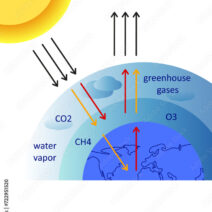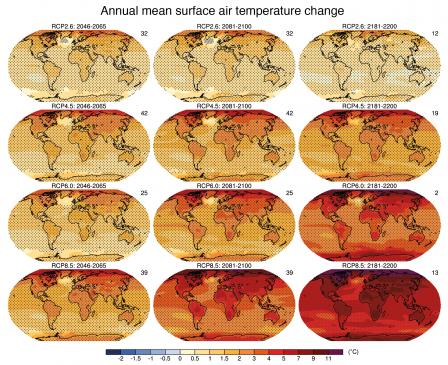Russia, the largest country in the world, sprawls across a vast expanse of land that traverses multiple climate zones. From the icy northern reaches of the Arctic to the surprisingly balmy southern regions, Russia presents a climatically diverse tableau that invites exploration and understanding. Have you ever pondered how a country can host both frigid tundras and verdant subtropical regions, often within a mere few hundred kilometers? This tantalizing dichotomy not only serves as a physical barrier that affects weather patterns but also embodies ecological phenomena deserving of meticulous examination.
As we embark on this journey through Russia’s climate zones, it becomes essential to delineate the key regions that define its climatic narrative. Central to our discussion are the Arctic, subarctic, boreal forests (taiga), temperate continental, and the subtropical zones, each revealing a unique ecological identity, shaped by latitude, geomorphology, and local atmospheric conditions.
The northernmost reaches of Russia are dominated by the Arctic climate zone, characterized by its frigid temperatures, perpetual ice cover, and stark landscapes. Here, land and sea intertwine, forming a polar desert where snowfall is minimal, yet the chill can penetrate skin and atmosphere alike. The coastal areas of the Arctic Ocean are often buffeted by fierce winds, creating a harsh environment for flora and fauna. Nevertheless, this apparently inhospitable region boasts a rich biodiversity that includes polar bears, seals, and migratory birds. How does life endure in such extremes, and what lessons can we glean from these remarkable adaptations?
Transitioning southwards, we enter the subarctic climate zone, where the harshness of winter remains but summers grace the landscape with brief bursts of warmth. Characterized by permafrost, this region supports a tapestry of boreal forests (taiga), which in their mature forms are thick with conifers like spruce and pine. This biome plays a critical role in sequestering carbon, thus acting as a counterbalance to climate change phenomena. However, the challenges posed by melting permafrost are becoming increasingly pronounced. As temperatures rise, what will happen to these vast carbon stores previously locked away? The implications for global climate stability are significant.
The taiga, often viewed as a resilient fortress of biodiversity, harbors not only tree species but a variety of wildlife ranging from moose to wolves. These creatures have evolved to adapt to the cyclical rhythms of a harsh climate, developing various survival strategies that may inspire future conservation efforts across the world. With the increasing threat of industrial encroachment, the preservation of the taiga becomes critical; what, then, should be our response to the dual challenges of development and conservation?
As we proceed southward, the climate transforms yet again into a temperate continental zone, characterized by hot summers and cold winters. This region experiences a stark variation in temperature and precipitation throughout the year, fostering diverse ecosystems that support both agriculture and human settlement. Wheat and rye fields stretch across the landscape, interspersed with deciduous forests. The unique climatic conditions in this zone allow for a plethora of species to thrive, contributing remarkably to Russia’s biodiversity. However, this bounteous region also faces threats from climate change, raising questions about agricultural sustainability and food security. How will farmers adapt to changing weather patterns, and what role can innovative agricultural practices play in securing a resilient future?
Finally, we arrive at the subtropical climate zones of Russia, primarily found in the southwestern territories, including parts of the Black Sea coast. Unlike the rest of the country, these regions enjoy a more temperate climate with milder winters and warm summers. This climatic anomaly allows for lush vegetation to flourish, including diverse fruit orchards and vineyards, unique to this part of Russia. The coastal areas are not only a hub for agriculture but also a tourism hotspot, attracting visitors drawn to the sun-drenched beaches and rich cultural heritage. Yet, these regions are not exempt from climatic challenges. The delicate balance within this ecosystem is threatened by climate variability, prompting us to consider: how can local communities adapt and thrive in the face of environmental changes?
In synthesizing the diverse climatic zones of Russia, one uncovers a rich tapestry of ecological interconnections that underscore the importance of nuanced environmental stewardship. Each climate zone hosts unique species and systems that contribute to the overall ecological resilience of our planet. However, as the global climate crisis intensifies, the questions posed throughout this exploration become ever more pressing. From the Arctic to subtropical zones, the pivotal challenge remains: how can we balance human development with the urgent need for conservation to protect these fragile ecosystems? As we reflect on this query, we are compelled to recognize our role in fostering a sustainable environment that honors the intricate connections between all living things.
Ultimately, the climate zones of Russia present a microcosm of global ecological diversity. Each region, with its distinctive characteristics, invites scrutiny, appreciation, and action. The time has come to engage thoughtfully with these environments, pushing forward the dialogue on conservation, adaptation, and sustainability for future generations.





